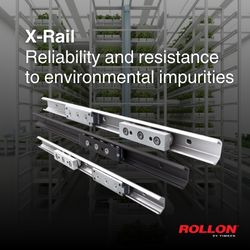Eliminate Just-In-Case Risk with Just-In-Time Replenishment
Eliminate Just-In-Case Risk with Just-In-Time Replenishment
By: Gary Bourdow
Supply chain disruptions, labor-related shortages, extended lead times, and rising costs have forced many companies to reassess how they manage their packaging inventory levels. As a result, businesses are reevaluating their inventory management strategies for their packaging. They find themselves stuck between having enough packaging inventory on hand to cover existing orders and too much inventory tying up working capital.
Businesses align with two typical approaches.
Just-in-Case inventory involves purchasing to min-max levels to maintain an inventory of packaging products to cover anticipated future demand.
Just-in-time (JIT) inventory matches packaging inventory volumes to current demand and production schedules. In a Just-in-Time system, the product is delivered when the manufacturer needs it, eliminating the need to hold inventory until it is used.
The Just-in-Case approach can consume substantial capital, staffing, and resources. For this reason, its popularity has waned over the years as businesses embraced the efficiencies and savings of Just-in-Time's lean approach to inventory management.
Unfortunately, some companies are running into Just-in-Time's darker side in today's turbulent environment. Supplier reliability issues, inability to package unexpected orders, longer than expected lead times, and escalating fuel prices drive up costs and imperil the ability to meet production needs and serve customers effectively.
Manufacturers want the assurances of a safety cushion on packaging supplies - especially anything remotely custom by specification or print. If the product is perishable, the challenge is even more significant. So having enough supplies on hand for that reason alone is vital to being able to pack foods as they are produced.
With so much at stake, some manufacturers are again turning to Just-in-Case inventory methods to ensure they can respond to their customers' needs and as a hedge to lengthy lead times and price increases. This is especially true for businesses whose sourcing strategy includes offshore products, extended lead-times or who haven't enjoyed a close collaboration with a packaging supplier who offers higher service levels and enhanced inventory management capabilities.
THE NOT SO HIDDEN COSTS OF JUST-IN-CASE INVENTORY
Few mid-sized manufacturers have the size, supplier relationships, purchasing power, in-house expertise, or time to run Just-in-Time across their entire packaging supply chain on their own. While there can be inherent benefits to purchasing in large volumes and having packaging on hand to respond to customer needs, the costs associated with Just-in-Case remain and can significantly impact working capital. These costs can put added pressure on manufacturers operating in a highly inflationary environment.
More than cost, in a fast-moving environment, Just-in-Case restricts the ability to be nimble.
IS JUST-IN-TIME STILL JUST RIGHT?
By design, Just-in-Time inventory seeks to eliminate excessive stock and high financing costs, obsolescence, and damage. As impressive as these benefits are, they pale compared to the most significant savings: the ability to sync your costs of financing inventory-related receivables with your payables. This is a substantial savings only possible through Just-in-Time inventory management.
Which approach is best in today's tumultuous environment? There is a third choice better suited for today's supply chain: Just-in-Time Replenishment (JITR).
JUST-IN-TIME REPLENISHMENT (JITR)
The answer may well be a Just-in-Time Replenishment program. In this scenario, the manufacturer's supplier proactively replaces customer inventory to a min-max the customer helps to determine. This approach provides for many different inventory levels across multiple products and categories. JITR is a customized, middle-of-the-road approach addressing both inventory security and cash flow optimization more effectively.
The amount of packaging inventory purchased and held is determined collaboratively and is specific to a customer's operational uniqueness and financial objectives.
HOW DOES SUPPLYONE MAKE JUST-IN-TIME REPLENISHMENT WORK?
SupplyOne has the unique advantage of being both a large-scale manufacturer and broad-line distributor of custom and stock packaging products and packaging equipment solutions. We have a track record of optimizing customer packaging supply chains to save businesses time, money, and improve cash flow. As a national company with a local presence, SupplyOne's Packaging Specialists work for you to optimize your inventory and packaging processes. Our vast network of best-in-class suppliers and long history of custom converting deliver the packaging solution you need, when you need it. What's more, SupplyOne does the work, and you maintain control.
With a host of complimentary services, including inventory management, price protection, summary billing, and full-service design and engineering, SupplyOne will reduce your total cost of packaging ownership while delivering confidence in your packaging supply chain.
To learn how SupplyOne can optimize your inventory management process visit supplyone.com.
Featured Product

X-Rail: reliability and resistance to environmental impurities
Rollon's X-Rail linear rails are a reliable solution in environments susceptible to impurities. Equipped with rolling elements with shaped and flat raceways, they are available in several versions: galvanized, nitrided or stainless-steel sheet metal. The latter version ensures total corrosion resistance, which is critical for hostile environments such as those found in vertical farming.
Particularly innovative is the T + U configuration of the X-Rail linear rails, which can compensate for the parallelism errors of mounting surfaces. This simplifies installation and reduces costs.
